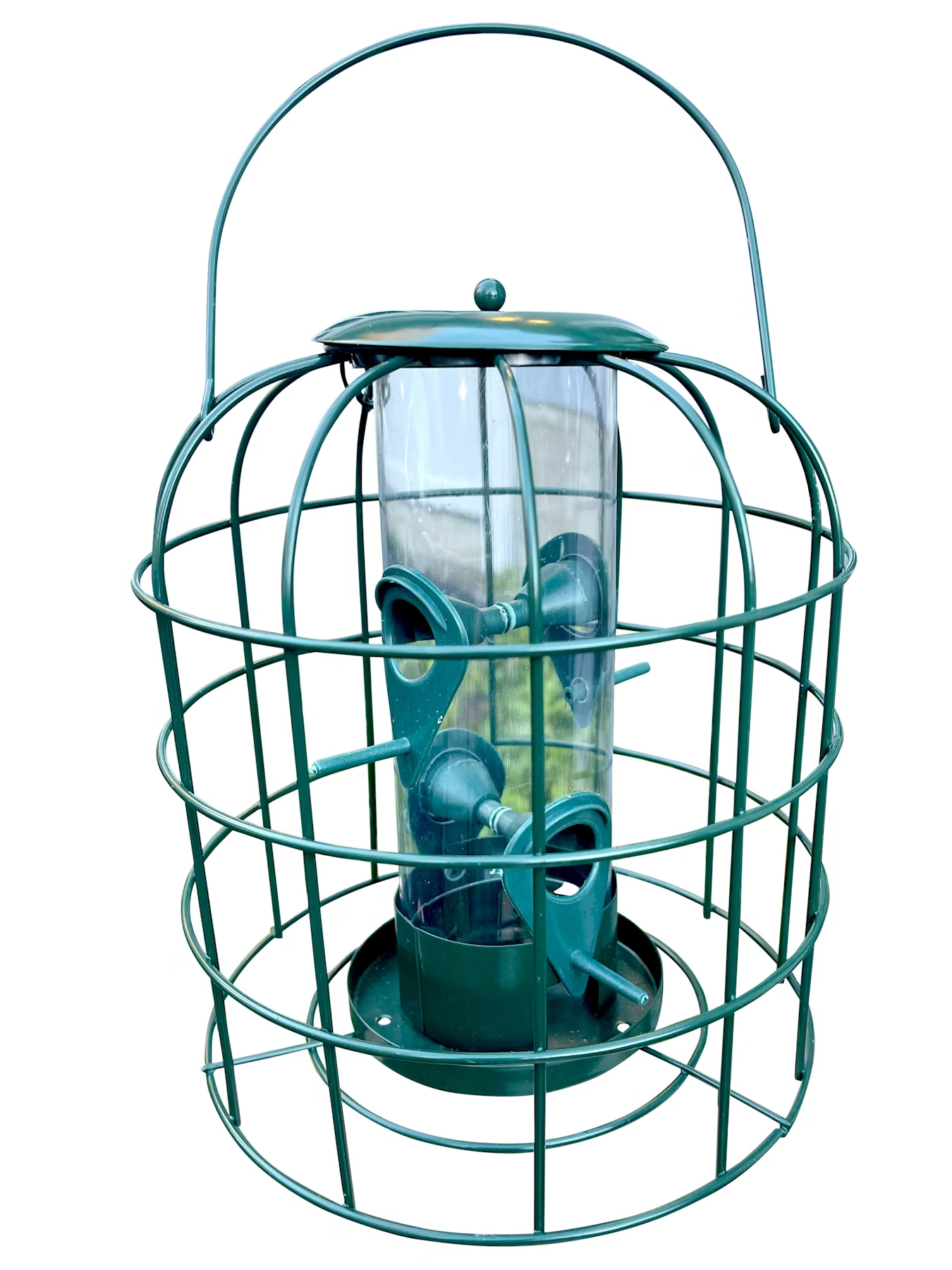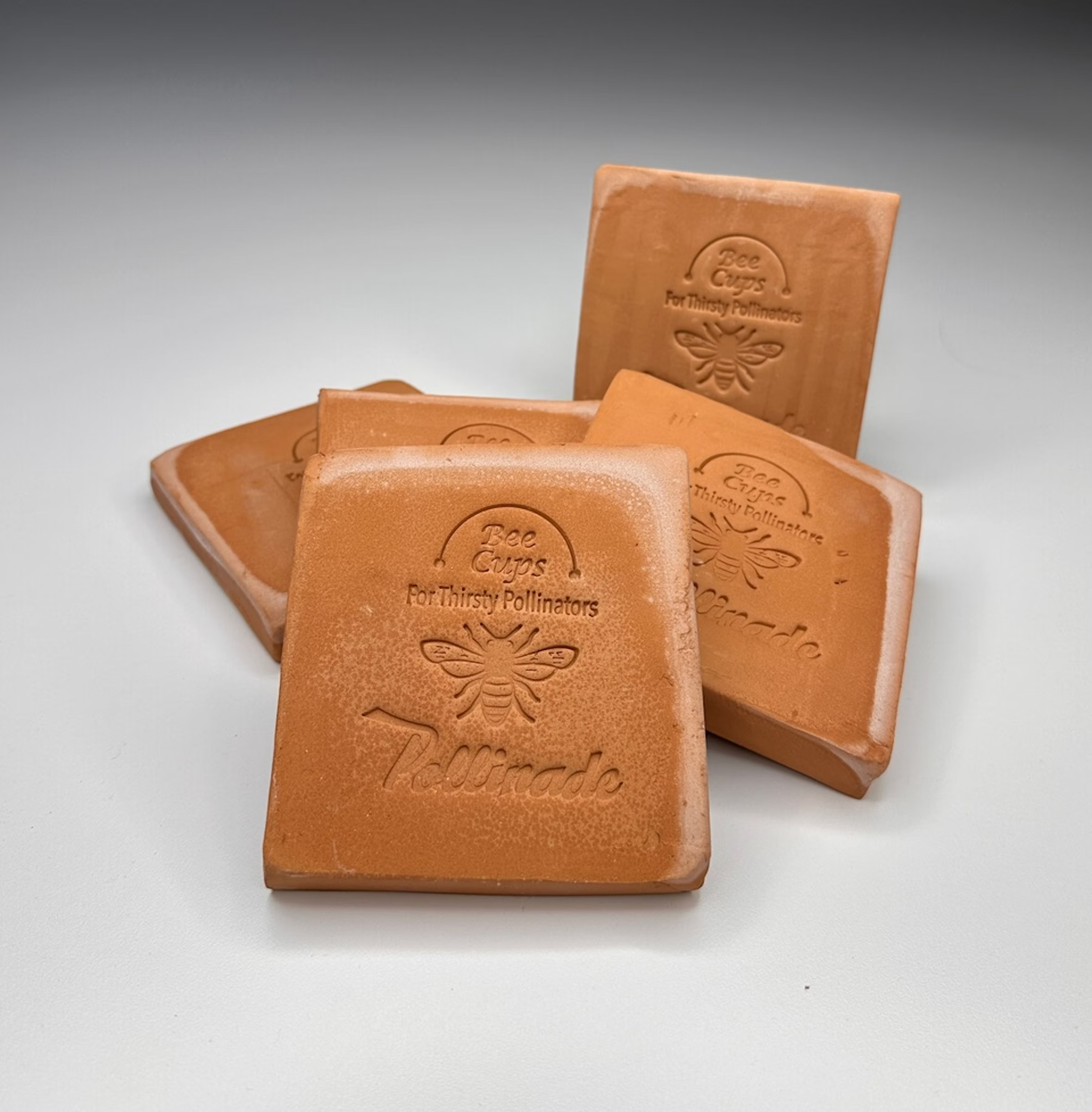How To Attract Finches To Your Yard – Planting & Feeding Tips To Bring Them Back For More!
The family of finches are amongst our most beloved songbirds – but how can you bring more to your garden? Find out how to attract finches with smart feeding and planting ideas
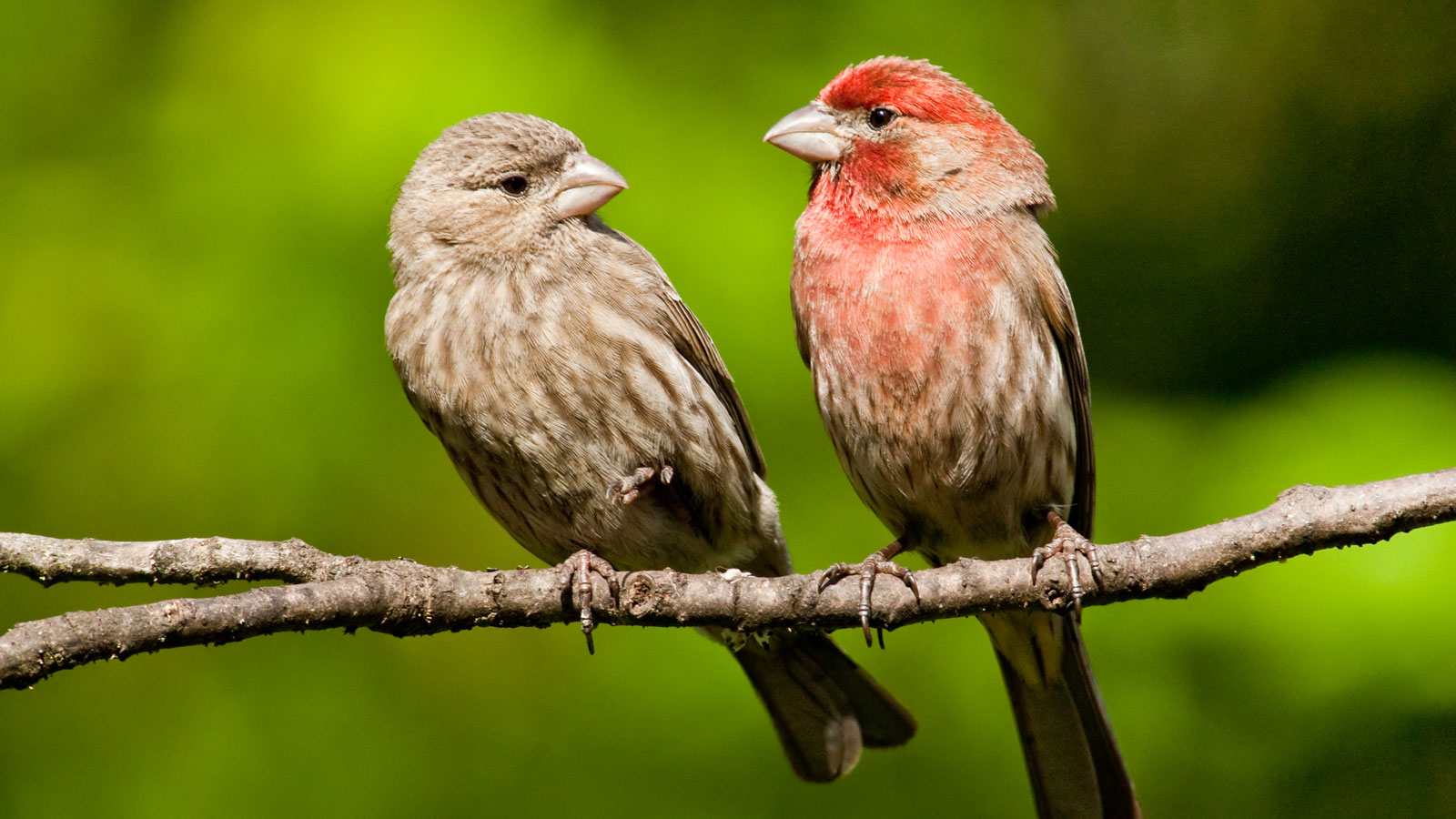

Janey Goulding
Finch Facts
Scientific name: Fringillidae
Size: 3-10 inches (7.5-25cm)
Habitat: Woodlands, home gardens, deserts, grasslands
Lifespan: 5-20 years
Range: North America, Europe
If you adore the sounds of songbirds, you should find out how to attract finches – they are some of the sweetest warblers you can spy in your garden. These birds are often confused with sparrows, but differ in their beak structure, song and color.
So how do you attract finches? Follow these tips to get the birds flocking to your yard. Discover how to create a welcoming habitat with the foods they enjoy, both with dedicated feeders and plants that provide suitable seeds. Once you know how to attract these lively birds, they will be sure to reward you with a jolly song!
Which Types of Finches Can I See?
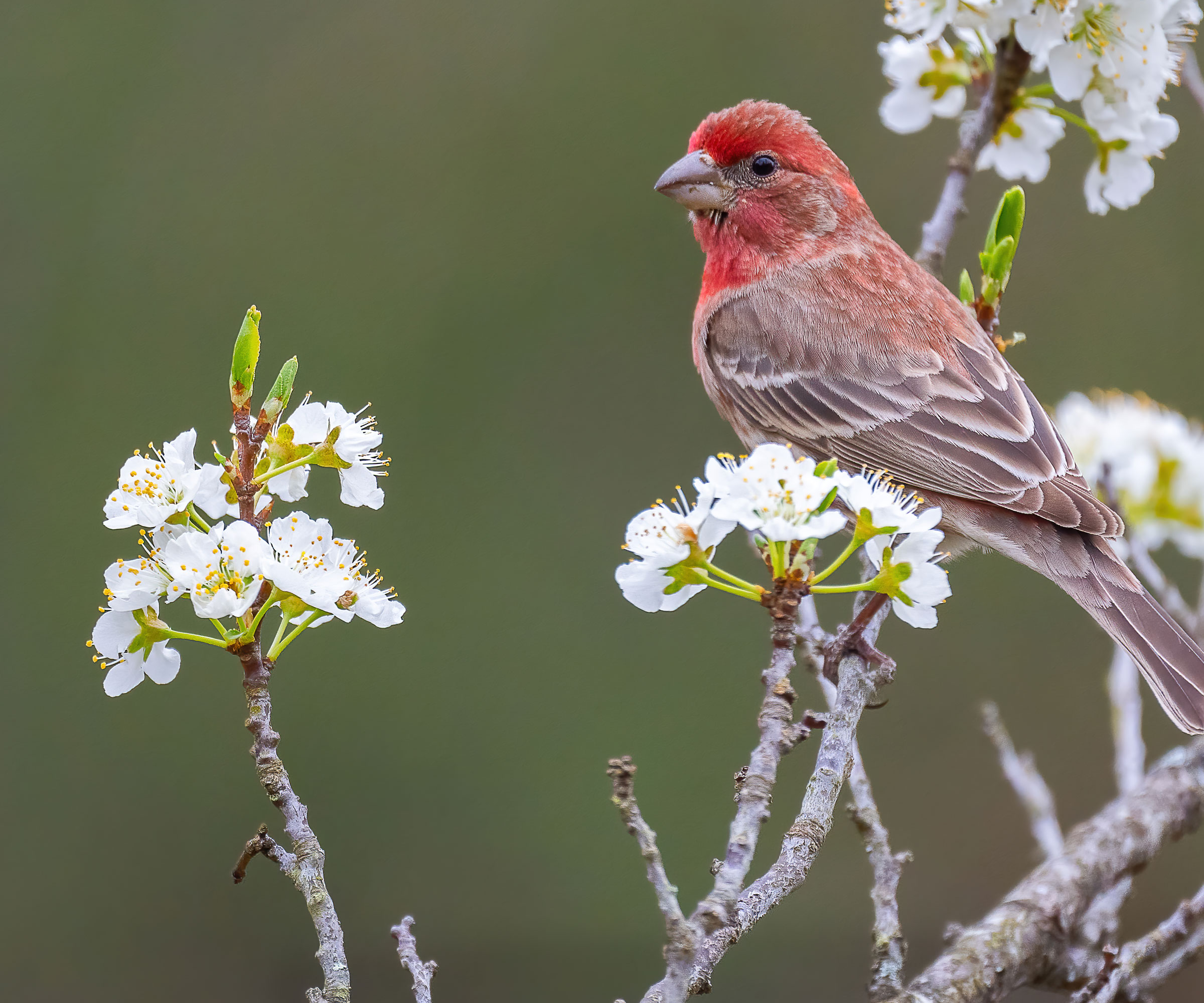
In North America, there are 17 distinct finch species, while in Europe there are 138. House finches are the type you most likely see in your garden. The male house finch has a warble of short notes that is very sweet and appealing. While the house finch may visit your home the most frequently, you may spy several other songbirds of this type around the bird feeder.
Sadly, finch numbers in North America are declining. Habitat loss, cats, rising temperatures, windows and pesticide use are all responsible for dwindling numbers. Once you know something about these species and their preferences, you will know how to attract finches to a feeder and sheltering plants. Create a bird sanctuary for these sweet songbirds to help sustain them and enjoy their song.
- House Finch: Small birds with cone shaped beaks and rosy breasts and heads in the male. Females are grayish brown.
- American Goldfinch: Unmistakable golden body with a black forehead and wings. Females are brown with streaked wings.
- Purple Finch: One of the larger finches, the males are purple-pink on almost all parts of the body. Females are streaky white and brown with a dark line along the throat.
- Pine Siskin: These birds have narrow, pointed beaks. Both sexes are brown and streaky with gold feathers in the wings.
- Redpoll: Males have a red patch on their heads which leads to the name. Females are brown with a smaller red patch.
- Grosbeak: These small birds come in a variety of colors. Gold, red, and black and white with a red breast.
- Crossbill: There are several species of this slightly larger finch. Their identifying characteristic is the crossed beak.
Best Food to Attract Finches

Whether you want to know how to attract house finches, siskins or crossbills, most of them have similar appetites. Finches primarily eat seeds – specifically, they enjoy thistle, black sunflower, canary seed, as well as insects, fruit and berries.
While they appreciate a variety of wild seeds, supplying supplementary food sources in a feeder is a surefire way to increase your finch numbers – particularly during cooler months. Catering to their seed desires is key to mastering how to attract finches to a new feeder. A good seed blend for a feeder will include a mix of amaranth, wheat, sweetcorn, black sunflowers seed, rye, quinoa, nyjer, rapeseed, millet and canary grass.
Best Feeders for Finches
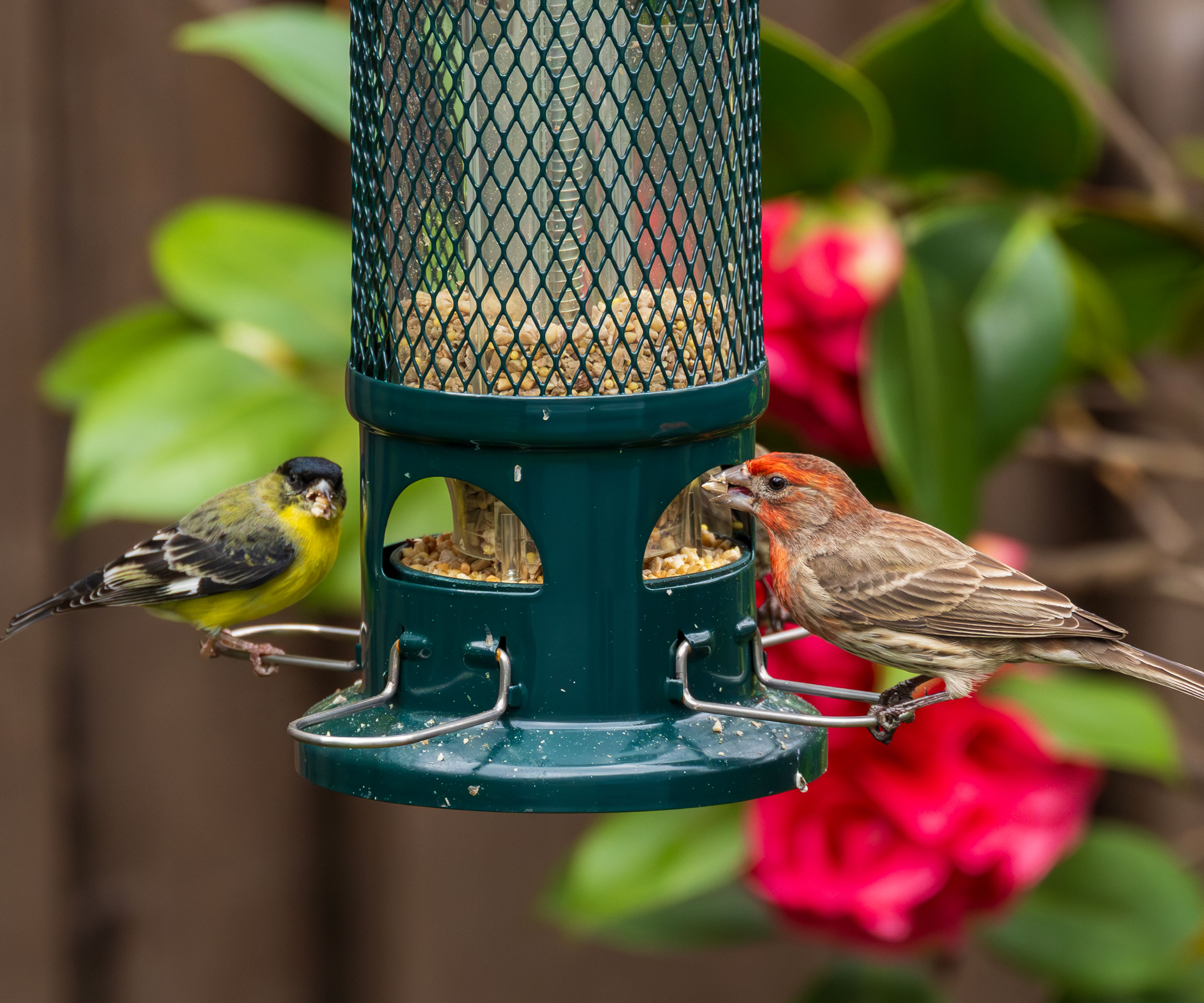
Several styles of feeder work for finches. Ideally, it should have a roof to keep rain out of seed trays, and perches for birds to cling onto as they eat. A hopper feeder is useful to fill with seed as it won’t be necessary to keep filling it constantly. Tube feeders don’t hold as much seed, but they usually have individual perches.
Sign up for the Gardening Know How newsletter today and receive a free copy of our e-book "How to Grow Delicious Tomatoes".
Specific to finches are nyjer feeders, also known as a thistle sock. These are mesh tubes that hang down and are filled with smaller seeds. You can buy a three-in-one feeder from Garden Guru Tools in the Gardening Know How Shop, with mesh or plastic tube options for finches and siskins.
Fruit feeders are also popular with finches. You suspend larger pieces of cut fruit from these. Just bear in mind if you don’t invest in a squirrel-proof feeder that you may attract squirrels and rodents. You can install a squirrel baffle over the top of feeders and add safflower to platform feeders, something squirrels detest.
Best Plants to Attract Finches
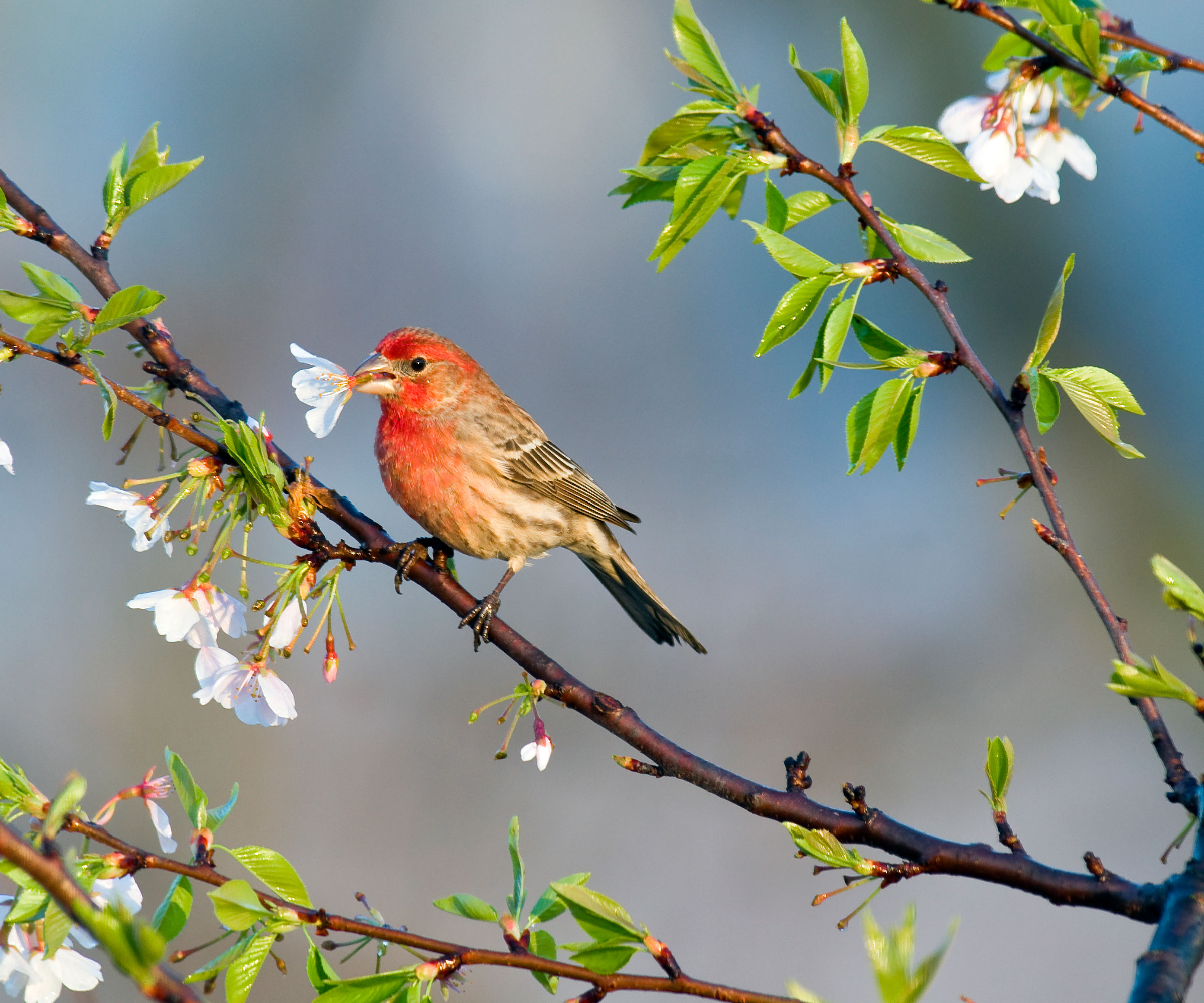
Many flowers that produce seed for finch food also provide a colorful ornamental display. Zinnias, coneflower, asters, trumpet honeysuckle, goldenrod, tickseed and cosmos are all vibrant birdseed plants to grow in your backyard. Ornamental grasses which produce plumes of seed are desirable as food, and also make great cover.
As well as growing flowers to attract birds, several evergreens provide ideal nesting spots for finches. Spruce, pine and hemlock are favorites for nesting and seed. Dogwood, holly and cotoneaster are other trees that finches enjoy. Meanwhile, elderberry and serviceberry produce bird-friendly fruit and are often visited by goldfinches.
Attracting Finches Through the Year
If you enjoy winter bird watching, you’ll know that birds in winter appreciate any supplemental food you can provide. To help encourage finches to your yard, you need to provide not only sources of nourishment but also resting and nesting sites.
When it comes to shelter, house finches are happy with homes as well as trees and shrubs! They are drawn to areas with overhead cover, in particular, and like to nest in places such as vents and ledges. Amusingly, they are not as likely to use bird houses as many other garden birds you tend to see.
You can encourage more finches to stop and rest if you grow evergreens like spruce and firethorn. Cultivate a privacy hedge with plants like dogwood, cotoneaster and hollies. Hollies like Honey Maid Holly, available in the Gardening Know How Shop, provide shelter and winter berries.
Other Ways to Keep Finches Happy
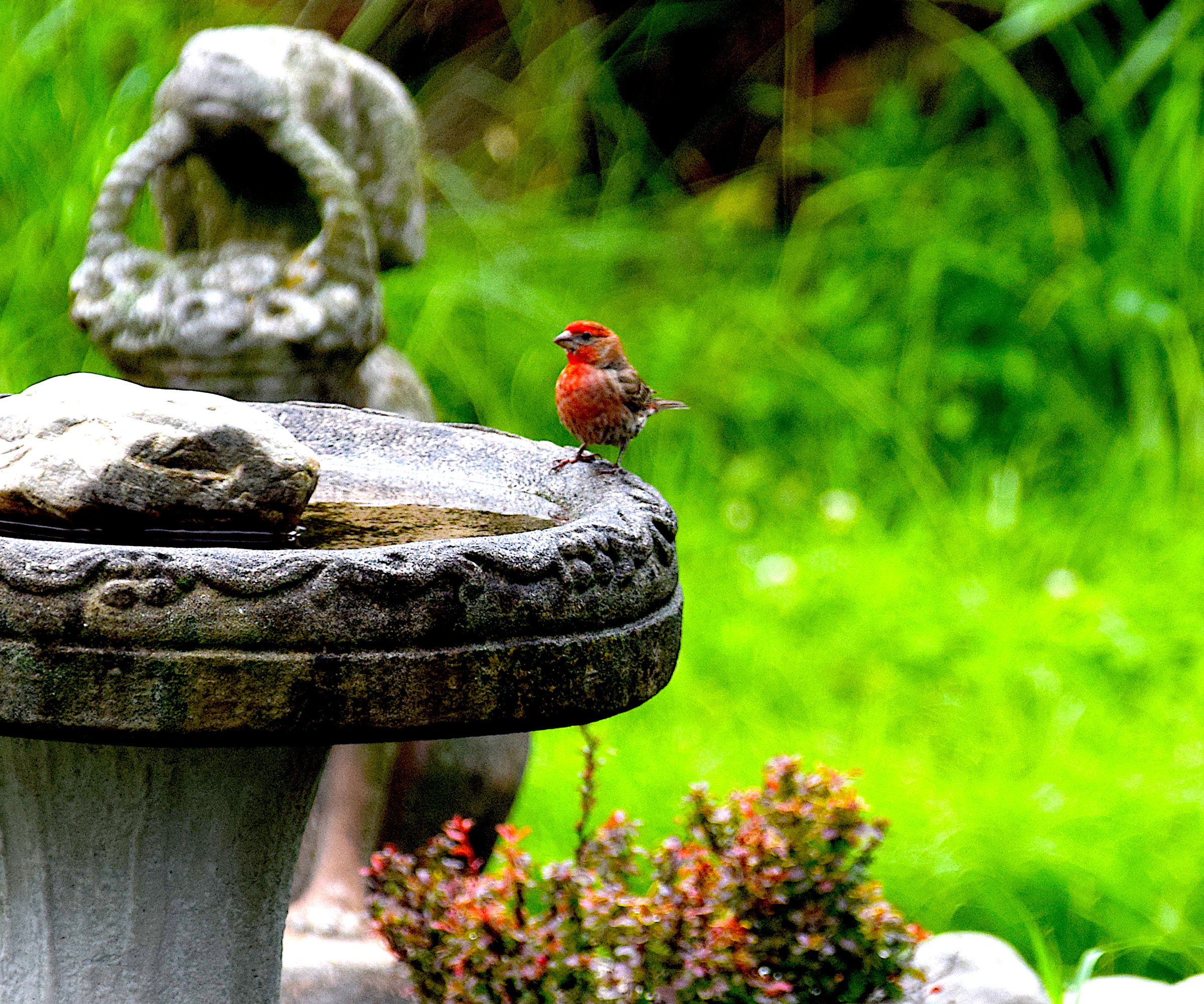
Make sure any visiting finches have a clean source of water as well as a regular supply of food. A bird bath is a great way to help finches keep clean and happy as well as hydrated. Ideally, use rainwater or spring water.
Try to avoid the common bird bath mistakes and you should be fine. Just make sure it is refilled regularly, and scrub the bath weekly. Scrub away any emerging algae with a brush, and sanitize with a diluted vinegar or baking soda solution.
Take care to make sure that any bird feeders, baths and nesting sites aren’t vulnerable to predators – and keep house cats indoors. Additionally, birds require a clean feeder. If the feeder has become fouled with waste or moldy seeds, they will seek to dine elsewhere.
Interested in more ideas for bird-friendly gardening and expert advice delivered straight to your inbox? Sign up for the free Gardening Know How Newsletter!
Frequently Asked Questions
Are finches attracted to yellow?
Some finch species, specifically goldfinches, are attracted to the color yellow. Other species have preferences for nesting material colors. Zebra finches, for example, prefer blue nesting material.
How high should you hang a finch feeder?
Hang your feeder at eye level, so it is easy to access for filling and cleaning. This is generally 5-6 feet (1.5-1.8m) above the ground. This will also help birds feel safe from predators while feeding. Hanging the feeder in a high branch or a spruce tree is an ideal place to attract finches.
This article features products available from third party vendors on the Gardening Know How Shop. Keep in mind that our plant inventory is limited - so if you’re thinking of purchasing, don’t wait!

Bonnie Grant is a professional landscaper with a Certification in Urban Gardening. She has been gardening and writing for 15 years. A former professional chef, she has a passion for edible landscaping.
- Janey GouldingContent Editor
